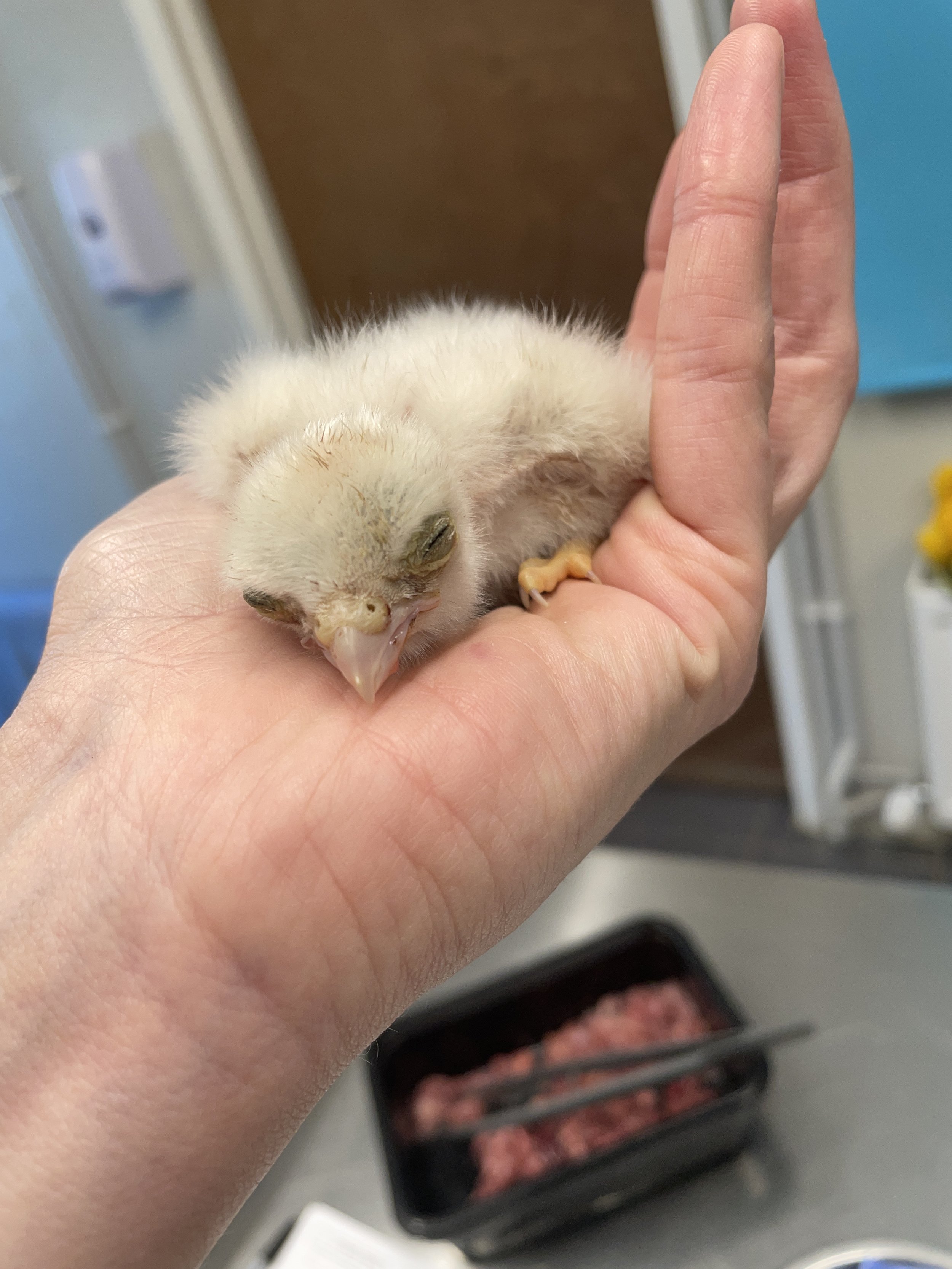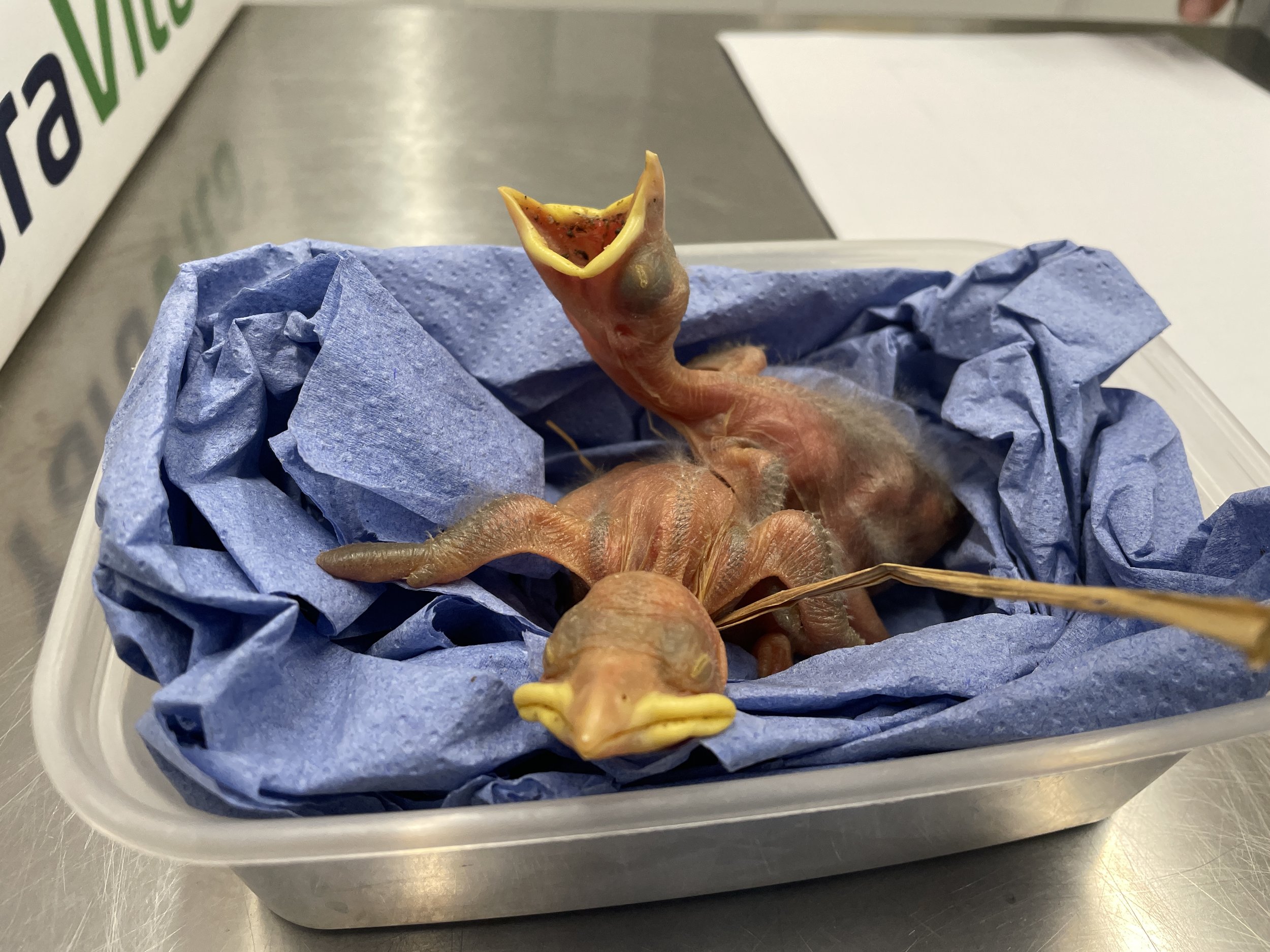Last week we received a call from a concerned farmer. He was moving some bales from his barn and discovered a nest of what he believed were Barn Owls. Jess asked him to take a photo and was surprised to see two Kestrels with two other non-raptor birds! The farmer brought the chicks to us and told Jess that there had been two other Kestrel chicks that were dead in the nest.
Raptors hatch covered in down, while passerines (which includes Jackdaws) hatch naked and develop down after a few days.
Jess took the “family” home with her and reached out to her contacts to determine what the non-raptors might be. The general consensus is that they are Jackdaws, which leaves us with a bit of a mystery! Did the Kestrels take over a Jackdaw nest, or did the Jackdaws take over a Kestrel nest? Both cases have been recorded, but to our knowledge, if the first scenario happens then the Kestrels would eat the Jackdaw chicks upon hatching. We suspect that both sets of chicks were only a day or two old when they were found.
We don’t normally care for non-raptors, but in this case, as they were together, the family have been cared for by our dedicated team at SOS and at home!
The Kestrels are now doing very well on four feeds a day. Raptor chicks can be sensitive to overfeeding, so we are monitoring their food intake very carefully and providing them with a similar diet to what they would get in the wild - bits of rodent and quail (to replicate wild birds).
Sleepy little Kestrel after having some food.
The Jackdaws, by contrast, are a bottomless pit of hunger! They demand food every time they wake up with an insistent squeaks and squawks! They are being fed a chicken and insect mixed mince (purchased as a treat for our Ravens!), with added hard boiled egg. But just like their wild counterparts - they will seemingly eat anything!
These two are constantly hungry!
We are being very careful not to imprint these very young birds, as this would be detrimental to their chances of a successful release back into the wild.
We hope that once the Kestrels are strong enough to tear at food themselves, we can move them to a hack pen where we’ll be more hands off in their care. We did attempt to see if our female American Kestrel might adopt them, and while this showed promise initially, she soon lost interest in them.



